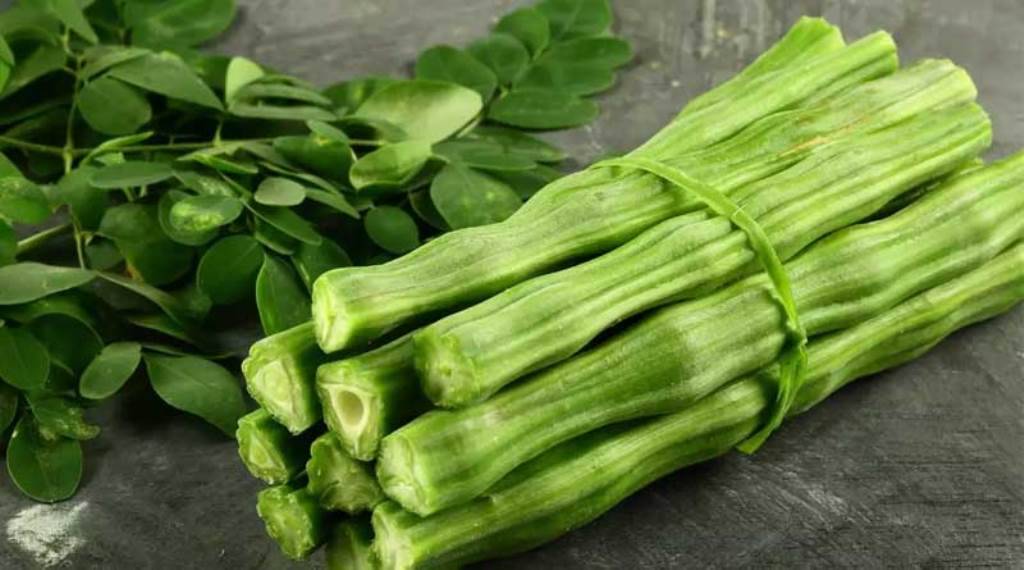
Santosh Sambhaji Kalane, of Village Balwant Station, Taluka : Sri Gonda, district Ahmednagar, Maharashtra, (Mobile No.09960611855) has created a record in the production of Drumstick. It is a fast-growing, drought-resistant tree, native to the southern foothills of the Himalayas in northwestern India, and widely cultivated in tropical and subtropical areas where its young seed pods and leaves are used as vegetables. It can also be used for water purification and hand washing, and is sometimes used in herbal medicine.
Techniques Adopted
The techniques adopted by him is mentioned herein:
-
Land preparation in the month of May 2008
-
The variety used was CO- I
-
Treatment of seed with Tricoderna VDT
-
Sowing of seeds in June 2008
-
The spacing used was 10 ft x 10 ft and two seeds were planted in each pit
-
After 15 days of seeding, 125 kg urea/ha was applied through the ring method
-
1 kg organic manure per pit was used after 15 days of seeding.
-
The same manure was used in 45 days intervals several times.
-
After two months of seeding, 125 kg DAP, 125 kg NPK 10: 26 : 26 were mixed and applied in the ring
-
In January 2009, cow urine was applied through drip
-
A mixture of 250 kg urea+ 125 kg NPI, 10: 26: 26 + 125 kg DAP + 30 kg Plants high plant growth regulator was applied / ha
-
Needed intercultural was done, but no irrigation was applied during the rainy season. From December (2008) onward irrigation was applied at an interval of 4 days through the drip, but during the dry season, he also irrigated through furrow
-
Pruning of branches were resorted to, after 15 days of seeding
-
As a result, lateral branching increased.
-
After a month of 1st pruning, medium height branches were pruned at a height of 6 ft.

-
The third time, pruning was done at a height of 9 ft. As a result, branching was profused and afterward plants become fruit-bearing.
-
After harvesting, a bundle of 10-12 kg is made and sent to Pune and Mumbai.
-
All necessary measures of plant protection were undertaken.
-
Regular field visits were carried out.
-
Stem borers, if located, were immediately destroyed with a peg and a mixture of Kerosine and microtophos were applied in the holes and then was closed with mud.
-
After a month of seeding, Cypermethyne (5%) and Chloropyriphos mixture was prepared and used @ 2 ml/lit when fruiting started.
-
A mixture of dichlorophos 76% EC (2 ml / lit) and thiophunate methyl 70% WP (0.5g / lit) was sprayed.
-
To control powdery mildew (disease), Microbutanyl 10 WP (0.5 g / lit) was sprayed.
-
A Pheromone trap was installed for 20 plants each.
Drumstick is a perennial plant. Therefore one harvesting does not stop the necessary operation. For higher yield, after the first harvesting proper management is essential. After the last harvest in May, the pruning of branches is resorted to and Bordeaux mixture is used in the cut portion of the plant. Then 20 kg FYM + 800 g SSP per Plant was added. After 3 months of this, 250 kg NPK 10: 26: 26 + 250 kg DAP + 125 kg urea/ ha were used. It is expected to get a higher yield in the second year. In the first year, a yield of 25 t / ha was obtained. The economics of 1st-year cultivation is mentioned in Table. The profit is likely to increase in the second year onwards.

















